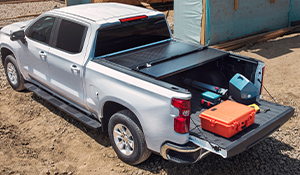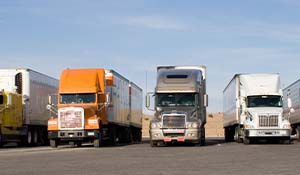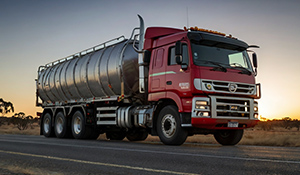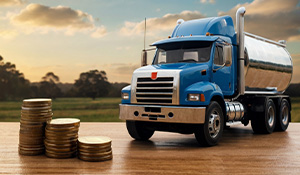Cat 390D L Hydraulic Excavator delivers stronger performance
It incorporates a refined design that provides greater hydraulic power, stronger structural components, added safety and convenience features, plus improved serviceability.
Engine and hydraulics
Powering the new 390D L is the 18.1-litre Cat C18 ACERT diesel engine, Tier III compliant and rated at 390 kW. The C18 features advanced electronic control, precise fuel delivery and refined air management for optimum performance, fuel efficiency and emissions control. The torque characteristics of the engine allow full power at maximum rpm, resulting in efficient hydraulic-pump operation and positive hydraulic response. Refinements in the crankcase, cylinder heads and proprietary MEUI (Mechanical Electronic Unit Injector) fuel system provide enhanced performance and durability for the C18.
Design enhancements in the implement hydraulic system allow the 390D L to deliver significantly greater digging and lifting forces than its 385C predecessor. Main relief pressure in the implement circuits has been increased to 35 000 kPa - up nearly ten percent from that of the 385C.
This increase in operating pressure, combined with larger-diameter hydraulic cylinders, results in a nine percent boost in digging-arm and bucket breakout forces for the general-purpose and reach front-end configurations, and a seven percent increase for the mass excavation configuration. Increased breakout force promotes faster trenching and loading cycles, plus stronger performance at the quarry face. In addition, lifting capacity over the end is increased by nine percent, and over-the-side capacity is up nearly twenty percent - the result of stronger hydraulics and a heavier counterweight.
Also new in the implement hydraulic circuits are electrically controlled regeneration valves, which assure rapid, positive response from the boom and digging-arm cylinders, while also significantly improving overall hydraulic efficiency. The resulting benefits include quicker cycle times and estimated fuel savings of more than two percent.
A universal quick-coupler circuit is available for factory installation and is compatible with both dedicated and pin-grabber type couplers. The system features an offset lifting eye and easy-to-use controls.
Structures and undercarriage
An improved undercarriage for the 390D L features redesigned links that operate with lower stress, forged idlers for improved durability and heavy-duty track rollers and carrier rollers. In addition, the recoil spring has been lengthened, giving the recoil mechanism greater impact-absorbing capability to protect the undercarriage system from shock loads.
To accommodate the higher digging and lifting forces generated by the 390D L, the car body (the structure mounting the machine upper to the track assemblies) is fabricated with thicker reinforcing plates at critical locations. Complementing this change are thicker plates at the boom-foot mounting in the upper frame, as well as thicker reinforcing plates in the rails and bottom pan to accommodate the heavier counterweight and increased swing-torque.
Both the standard counterweight and the optional removable counterweight weigh 12.4 mt (13.7 tons), making them slightly more than 6 percent heavier than the 385C counterweight. As a safety enhancement, activation of the optional counterweight-removal system locks out travel and implement-hydraulic functions to prevent unexpected movement of the machine.
Operator comfort and convenience
The 390D L operator station is spacious, quiet and comfortable with commanding visibility.
The cab is pressurised and the filtered ventilation system combines with automatic climate control to maintain a constant, comfortable environment. The monitor provides full-color graphic displays with comprehensive machine information presented in either an English or ISO format.
The monitor provides fluid-level checks when the engine is started, can list approaching service intervals and can display real-time fuel-consumption information numerically. Flexible power modes - high-power or economy power - allow the operator to adjust machine performance to the task. Both modes provide the same digging forces, but the economy mode allows the machine to work with fuel-saving efficiency when production requirements are less critical.
For operator comfort and efficiency, the height of the control-lever consoles is adjustable, and the response and modulation of the electro-hydraulic joysticks can be adjusted through the monitor. The control-pattern changer, also accessible through the monitor, allows the operator to select preferred lever functions. In addition, the monitor displays images from the optional rear-view and Work Area Vision System cameras, the latter mounted on the boom or side of the machine.
To diminish heat and noise in the cab, the hydraulic control valve, pumps and reservoir are positioned on the right side of the machine, away from the operator station. Standard halogen lights provide exceptional jobsite illumination, but they can be replaced with optional high intensity gas lights on the boom and upper cab if more illumination is required. Lights are time-delayed to allow safe exit from the machine at night. And to maintain good communication, the cab is two-way-radio ready.
Service Improvements
The 390D L uses an electric fuel-priming pump, which simplifies filter changes. A dual-element air cleaner, with a double radial seal, is standard. All filters, except for the high-pressure fuel filter, are accessible from the left side of the machine. Service-safety features include a 24-volt service-light receptacle and wider, 500mm walkways that provide sure-footed access to maintenance points.
To facilitate easier, environmentally sound routine maintenance, the 390D L is equipped with protected, valve-controlled fluid-drain ports and self-contained hoses for fuel, coolant and lubricant systems. Easy-to-change spin-on filters are used in the fuel and lubricant systems, and pressurized fluid-sampling ports (in all pressurised-fluid circuits) assure reliable fluid samples. An electronic warning system alerts the operator if the air filter or hydraulic filter is approaching restriction limits.
The Electronic Power Control (EPC) has been relocated from the cab (its position in the 385C) to the air-cleaner compartment. The new location allows the cab floor to be washed without risk of damage to the EPC. For further reliability, the EPC and its electrical terminals are weatherproof.












